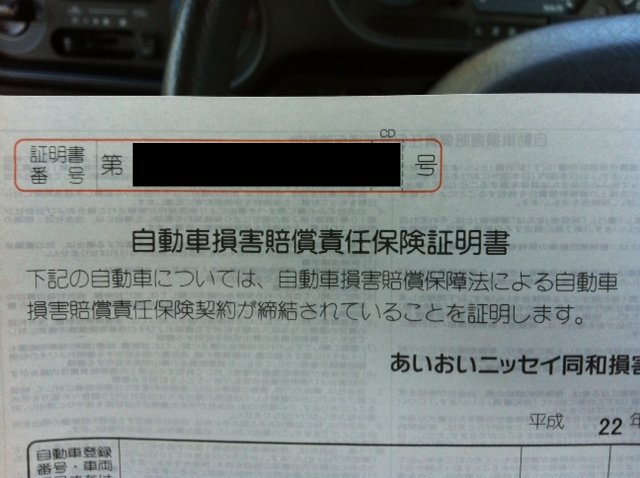Congratulations! You’ve joined the ranks of expats who have gone through the often arduous process of trying to get your driver’s license in Japan (at least for Americans... or those who came to Japan without a driver's license). No matter how many times it took you to pass the practical driving test (if you had to take it), you can be proud and enjoy driving along the narrow streets of Japan. However, before you get in your car, have you thought about what you would do if you were involved in an accident? Do you already have the required paperwork to show the police?
I recently had the misfortune of going through this without having thought about it all before it happened. So, let me tell you how things went, and offer a few tips on what you can do to be prepared.
If you don’t speak Japanese: After talking with our local police department, it seems as though the police departments have on-call translators but they may not be available to come to the scene right away. This means you would have to wait even longer (the process took almost two hours for me without having to wait for a translator...)
Words to know
Car accidents can be split into two main categories:

物損事故 ぶっそんじこ bussonjiko property damage
人身事故 じんしんじこ jinshinjiko an accident resulting in injury or death
What the police will ask you for:
1. Driver’s License
自動車免許書
じどうしゃめんきょ
jisousha menkyosho
2. Alien Registration Card
外国人登録証明書
がいこくじんとうりょくしょうめいしょ
gaikokujin touryoku shoumeisho
3. Form showing shaken is up to date
自動車検査証
じどうしゃけんさしょう
jidou shakensa shou
4. Form showing you have the mandatory car insurance
自動車損害賠償責任保険証明書
じどうしゃ そんがい ばいしょう せきにん ほけん しょうめいしょ
jidousha songai baisyou sekinin hoken shoumeisho
 |
| The jidousha songai baisyou sekinin hoken shoumeisho (form showing you have the mandatory car insurance) |
So, you’ve gotten into a car accident. What do you do first?
Call the police, of course. However, unless you can explain to the police in Japanese where you are, it might be better to let the other person call the police and report the accident.
I let the other person call the police and while he was talking on the phone, I was trying to keep the sun off of Airi, who was sleeping peacefully in the back of the car. It then occurred to me that I should probably be doing something as well. I wasn’t sure what to do, so I called a Japanese neighbor of ours and asked. They said to call the insurance company, which is the next thing you should do.
The man I rear-ended came over while I was talking to my neighbor and handed me his phone saying his insurance company wanted to talk to me. So I got on the phone and the insurance company asked for my insurance information (in Japanese).
On your car insurance form mentioned above (自動車損害賠償責任保険証明書), there should be a phone number to call. You need to call and file a report. (If you don’t speak Japanese, it might be good to call before something like this happens and see if your insurance company has people that can speak English).
I called my insurance company and tried to file a report only to be given the phone number for the branch office in our town, which I had to then call and file the report (all in Japanese). They asked for my name and ID number (found at the top of your insurance form) and then asked what happened and where. I couldn’t give a precise location for the accident but they said it was fine since they could get it from the other person’s insurance company. Then they asked to speak to the person, so I handed him my phone and he gave them his insurance information.
About 30 minutes after calling the police, a police officer finally arrived. The first thing he asked was if anyone was injured and since everybody involved said no, he asked what happened and then started taking down our information to file a 物損事故 (property damage) report.
He asked for the four forms I mentioned above and was writing down this information when the passenger in the other car started getting woozy and not feeling good. Some of their colleagues arrived and decided to take the man to the hospital to get looked at. This then made the accident a 人身事故 (an accident resulting in injury or death) and he had to call in other officers who handled that.
So after another 30 minutes or so, those officers arrive and start going through the same process the first officer went through. They took our statements and checked and recorded our forms and IDs. Then they had us walk them through what happened and where, as the officer chalked up the street so they could write a more detailed report about the accident.
When they finally let me leave, after they had checked that my turn signals still worked, it was two hours later.
Later that night I got a call from the insurance company saying that they had talked with the other insurance company. Since the accident was completely my fault, the insurance company said they would take care of payments for repairing the other car and medical bills for the injured passenger as covered by our policy.
Since the insurance company said they would handle everything from here on, I thought everything was dealt with. That is until I got something in the mail from the police...
To be continued...
You can read Part 2 of "What to do if You're in a Car Accident in Japan" here.
For those of you out there who have experienced this, how was it? What did you find the most difficult or challenging? What things would you have liked to know beforehand?
***


No comments:
Post a Comment